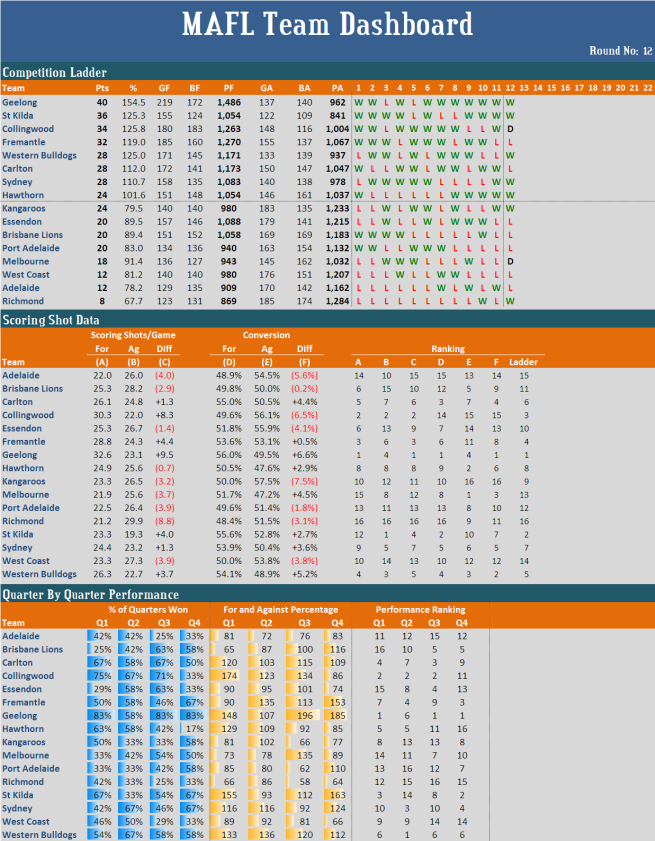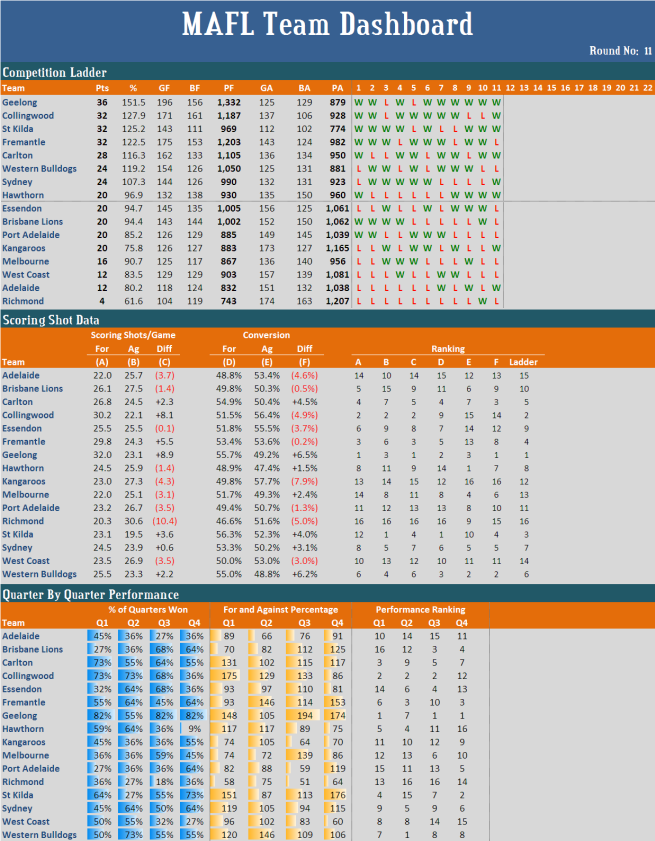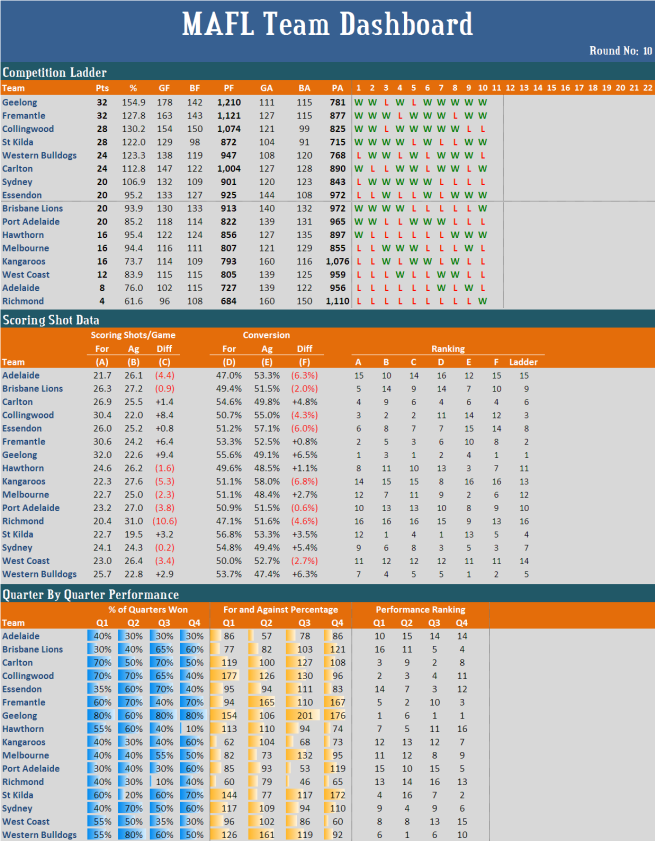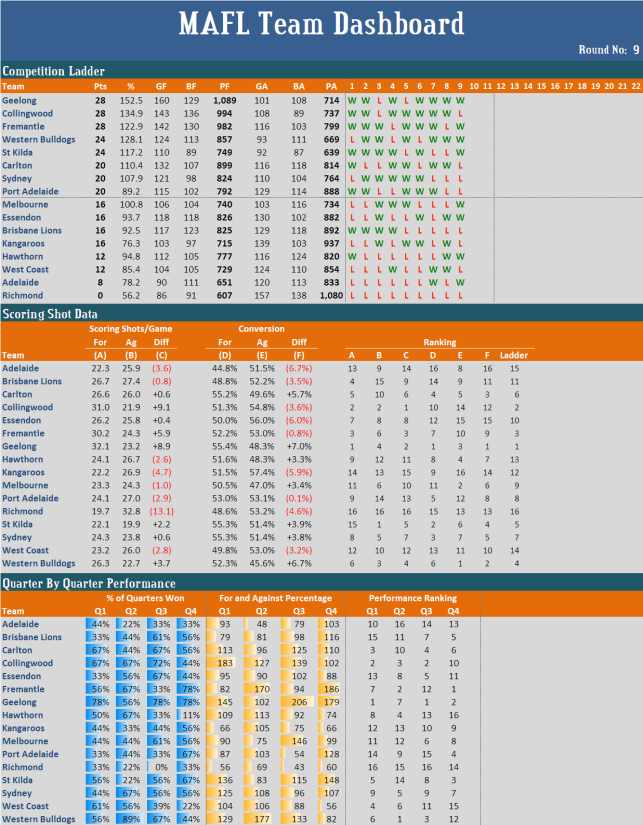MAFL 2010 : Team Dashboard for Round 12
 Tuesday, June 15, 2010 at 6:47PM
Tuesday, June 15, 2010 at 6:47PM Here's the week's MAFL Team Dashboard.

This week I thought we'd take a look at the correlations between team ladder position and the performance statistics in the Scoring Shot Data and Quarter-By-Quarter Performance sections of the Dashboard.
Here's the summary:
Scoring Shots
- The (rank) correlation between Scoring Shots For (measure A) and Ladder Position is +0.75. It would be much higher but for the effect of St Kilda who are 12th on this measure but 2nd on the ladder.
- The (rank) correlation between Scoring Shots Against (measure B) and Ladder Position is +0.84.
- The (rank) correlation between the Scoring Shot Differential (measure C) and Ladder Position is +0.98.
- Creating and preventing scoring shots seem to be of roughly equal importance in generating success so far this season.
Scoring Shot Conversion
- The (rank) correlation between Own Conversion Rate (measure D) and Ladder Position is +0.72. Collingwood, who are 3rd on the ladder but an astonishing 14th on this measure, drag this correlation down. The Pies could surely have had no better reminder of the importance of converting opportunities than that provided by their 9.22 performance on the weekend, which cost them 2, and almost 4, competition points.
- The (rank) correlation between Opponents' Conversion Rate (measure E) and Ladder Position is +0.08.
- The (rank) correlation between Conversion Rate Differential (measure F) and Ladder Position is +0.41.
- Clearly, this season, success has been far more about converting opportunities than it has been about preventing opponents from doing the same.
Quarter-By-Quarter Performance
- The (rank) correlation between ranking on Q1 performance and Ladder Position is +0.79.
- The (rank) correlation between ranking on Q2 performance and Ladder Position is +0.58, dragged down by St Kilda, who are 2nd on the ladder but 14th on Q2 performances, having won just 4 from 12 second terms.
- The (rank) correlation between ranking on Q3 performance and Ladder Position is +0.69
- The (rank) correlation between ranking on Q4 performance and Ladder Position is +0.65. Two teams have depressed this correlation, Collingwood and Hawthorn, the former being 3rd on the ladder but 11th on Q4 performances, and the latter being 8th on the ladder but 16th on Q4 performances.
- Unusually, it's been Q1 performances that have been most indicative of a game's outcome this season. Winning teams have won first quarters in 71 of the 96 games played so far this season (and they've drawn 2 more), which is higher than any other quarter.
To put this in some historical context, last season, winning teams won just 68.9% of games (ignoring draws). This season they've won 75.8% (ignoring the draw).
 TonyC |
TonyC |  Post a Comment |
Post a Comment | 



